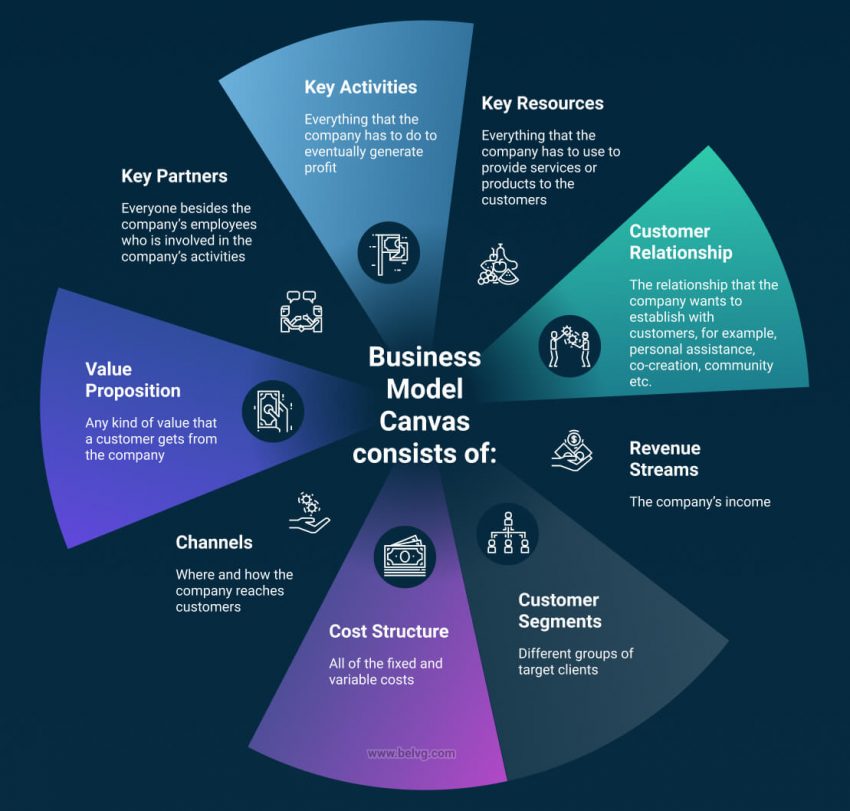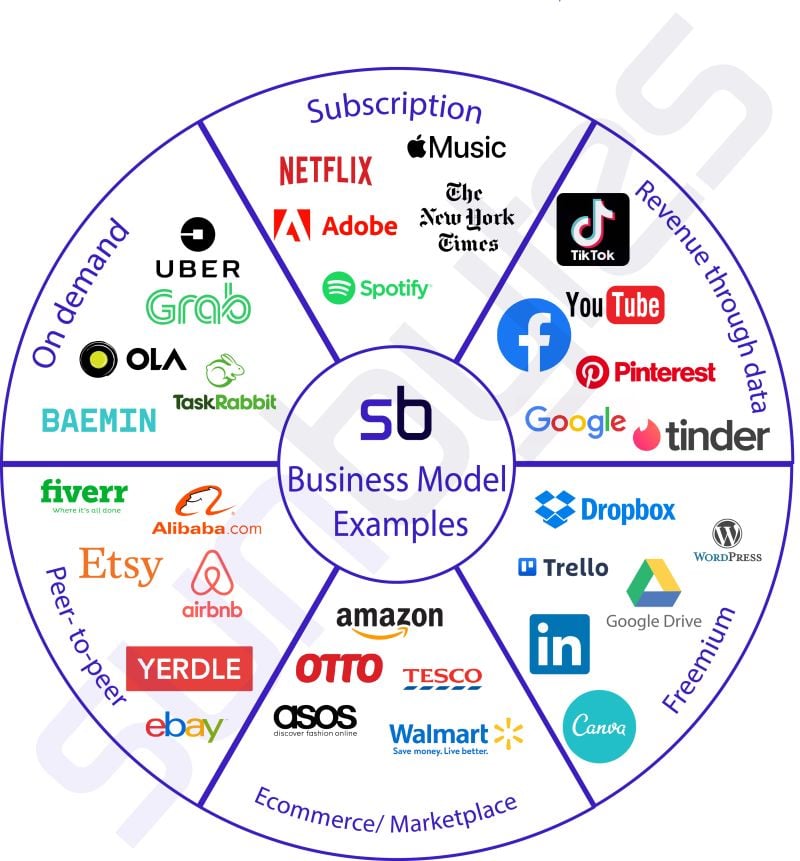
Top 10 business models that every major company uses

In today's business landscape, selecting the right business model is pivotal for a company's success, surpassing even groundbreaking products. Business model innovation not only adds value for customers but also boosts operational efficiency and revenue generation. From subscription services fostering steady revenue streams to the freemium model reducing customer acquisition costs, these diverse approaches offer pathways for sustained growth. Whether through affiliate marketing, franchise expansion, or direct sales strategies, companies navigate the dynamic market by leveraging models that align with their goals and adapt to industry dynamics.
1. Subscription service

Subscription models, epitomized by industry behemoths such as Netflix and Amazon Prime, operate on the premise of customers paying recurring fees for uninterrupted access to a service. This business model not only ensures a constant influx of revenue but also boasts a growth rate that surpasses traditional models by 5 to 8 times. The allure lies in the predictability and stability of income streams, providing companies with a foundation for financial resilience. Customers, in turn, benefit from a seamless and hassle-free experience, enjoying the desired service without the burden of individual transactions.
2. Freemium

The freemium model has been adeptly employed by industry leaders like MailChimp and LinkedIn, and operates on a dual-service structure, blending free and paid offerings to convince users to upgrade. This approach serves multiple strategic purposes for businesses. Firstly, it acts as a cost-effective method to reduce customer acquisition expenses, allowing companies to broaden their user base without substantial upfront costs. Secondly, offering a free version provides a valuable opportunity to observe and analyze consumer behavior, aiding in the refinement of products and services. By striking a balance between complimentary access and premium features, the freemium model not only attracts a wide audience but also positions itself as a dynamic tool for businesses aiming to understand and cater to the evolving needs of their user base.
Read also:Cruel Intentions 2 Cast A Comprehensive Look At The Talented Ensemble
3. Affiliate marketing

Affiliate marketing operates on a commission-based collaboration, wherein businesses promote products or services from other companies, earning a commission for each successful sale. Renowned for its low-cost and low-risk attributes, this model has found favor among websites such as Wirecutter. The appeal lies in the minimal initial investment required to initiate affiliate partnerships, making it an accessible option for businesses seeking to monetize their platforms without substantial financial commitments. By leveraging the expertise of subject-matter specialists, affiliate marketing fosters a symbiotic relationship between advertisers and content creators, allowing both parties to benefit from increased exposure and revenue. The effectiveness of this model lies in its ability to create a mutually beneficial ecosystem.
4. Franchise

Pioneered by industry giants like Domino's Pizza and McDonald's, the franchise model is a strategic approach wherein a company licenses individuals to operate its established business under its brand. By granting entrepreneurs the right to replicate a proven business model, franchises leverage the established brand recognition and operational success of the parent company. This not only facilitates rapid market penetration but also provides franchisees with a tried-and-tested framework, reducing the inherent risks associated with starting a new venture. The franchise model's success lies in its ability to balance centralized control with localized entrepreneurship.
5. Direct sales

Direct sales represent a business model wherein products or services are sold directly to consumers, sidestepping traditional retail channels. Industry leaders such as Amway and Starbucks have harnessed the direct sales strategy, reaping the benefits of forging stronger connections with customers while bypassing retail intermediaries. By eliminating the need for physical storefronts, companies engaging in direct sales reduce operational costs and gain flexibility in pricing and marketing strategies. The model not only fosters personalized interactions between sellers and consumers but also enables companies to respond promptly to market feedback and changing preferences. For Amway and Starbucks, this approach not only enhances customer loyalty but also allows them to retain a larger share of revenue by cutting out retail margins.
6. Peer-to-Peer (P2P)

Peer-to-Peer (P2P) models embraced by Uber, Airbnb, eBay, and Upwork, act as a conduit, linking buyers and sellers directly through an intermediary platform, effectively circumventing the necessity for traditional production, labor, and shipping expenses. By eliminating the overhead associated with physical production and distribution, P2P models streamline transactions, making them more cost-effective and efficient. Both buyers and sellers benefit from reduced costs and increased accessibility to a broader range of options. Uber transforms transportation services, Airbnb revolutionizes lodging, eBay facilitates online auctions, and Upwork connects freelancers with employers, exemplifying the versatility and success of P2P models.
7. Razor and blade

The razor and blade model is a strategic approach where a company sells a core product at a lower initial cost, to drive subsequent sales of complementary, higher-priced items. A quintessential illustration of this model is found in Amazon's Kindle ecosystem. Kindle offers inexpensive e-books, serving as the metaphorical razor, enticing consumers with affordable content. The brilliance of the model lies in Kindle's primary goal–to boost sales of the higher-priced Kindle e-reader, positioned as the indispensable "blade" that complements the affordable e-books. Once users invest in the Kindle platform, they are more inclined to purchase the pricier e-reader, fostering customer loyalty and recurrent revenue streams.
8. Consulting

Consulting models strategically deploy subject-matter experts to offer specialized advice to clients, positioning businesses as authoritative and trustworthy sources in their respective industries. This model is exemplified by industry leaders such as Deloitte and McKinsey, which have mastered the art of providing invaluable insights and strategic guidance. By leveraging the expertise of professionals in specific domains, consulting firms become indispensable partners for businesses seeking informed decision-making and problem-solving. The success of the consulting model lies in the cultivation of a reputation for reliability and expertise, fostering long-term relationships with clients. Deloitte and McKinsey, among others, have become synonymous with strategic consultancy, establishing themselves as go-to authorities in navigating complex business challenges.
Read also:Eileen Fisher Net Worth A Journey Through Fashion And Fortune
9. Hidden revenue

The hidden revenue model is a strategic approach adopted by companies offering free services while generating income through alternative streams, most notably through advertisements. Two prominent exemplars of this strategy are Google and Meta or Facebook, which provide users with free access to their platforms, be it search engines or social media while simultaneously monetizing user engagement through targeted advertising. In this model, users may not be directly charged for the services they enjoy but the companies extract value by leveraging user data and attention to attract advertisers.
10. Open source

The open-source model is a strategic framework wherein companies offer free products or services while generating revenue from support and supplementary offerings. This model has proven successful for entities like MongoDB, Wikipedia, and Mozilla. These organizations provide free access to their core products, such as MongoDB's database management system, Wikipedia's collaborative encyclopedia, and Mozilla's Firefox browser. Revenue is subsequently generated through support services, customization, and additional features. This collaborative environment not only enhances product quality but also encourages continuous improvement and innovation.


